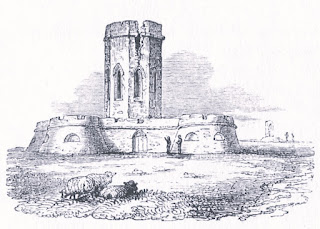Some
days all you really want is a good beach.
Today was one of those days. With
an egg sandwich and a bottle of water in my bag, I walked along to Botany Bay
near Broadstairs. Not to be confused
with Botany Bay in Australia, the landing place of Captain Cook.
Walking
down on to the golden sands, I left my shoes behind and went for a paddle around
the many rock pools. As I usually do
when I’m here, I had a scout around for fossils, as this is an area renowned for
its fossils. I didn’t find any, though
did find a rather ergonomic light sort of stone that fitted in the grasp of my
hand like it had been specifically designed for that purpose. It went in my pocket.
Back
on the beach the white cliffs towered above me, while just along from me were two
chalk stacks where an endless array of scantily clad people posed for selfies.
I
ate my egg sandwich, drank my water, and pondered on the fact that a couple of
hundred years ago, rather than being a tourist spot for sunbathers and fossil
hunters, Botany Bay, like many of the bays around this area of Kent, was notorious
for smugglers. One of the most famous of
these was Joss Snelling, who led the Callis Court Gang. On a cold winter morning in 1769, Joss and
his gang were down on the beach at Botany Bay.
There, boatmen had delivered a load of illegally imported wine, brandy, schnapps,
and tea. The gang were just loading it
onto carts when they were ambushed by a party of Excise Men. A bloody battle between the two groups then
took place, leaving most of the gang either captured or dead, one of the Excise
Men dead, and several of them seriously injured. Snelling and a couple of his men escaped and though
suspected of being members of the gang, were not prosecuted. Within a few months Snelling was back smuggling and had quickly replaced his lost gang members with new recruits.
Snelling
carried on his smuggling activities until he was an old man. At the age of 89, he and a friend were prosecuted
after Excise Men found them on Kingsgate beach by a load of kegs of brandy and
rum. In court Snelling and his friend
both stated that they were not involved in smuggling, but rather had found the
kegs on the beach while out walking and decided to take them. As there was no
evidence of them being involved in smuggling, they were both instead fined for
possessing illegally imported goods.
Snelling
went on to live to the grand old age of 96 and had achieved such notoriety that
in 1829 he was introduced to the future Queen Victoria as ‘the famous
Broadstairs smuggler.’
In
the heat of the afternoon sun, I went for another quick paddle and a
wander. Looking around the chalk of the
cliffs and the stacks I found lots of graffiti carved into them. I
didn’t remember there being so much last time I visited, and in my memory the
cliffs were almost a pure, virginal white.
But hey, memory plays tricks, and it was quite a while since I last
visited.
As
the beach became busier, I decided it was time to make my way home. Before departing, I left a Skulferatu in a
skull and crossbones that someone had carved into the chalk.
The
coordinates for the location of the Skulferatu are –
Latitude
51.388732
Longitude
1.436268
what3words:
gosh.discouraged.client
I used the following sources for information on Botany Bay –






























